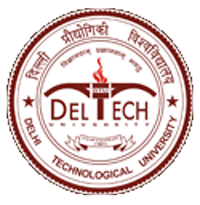Please use this identifier to cite or link to this item:
http://dspace.dtu.ac.in:8080/jspui/handle/repository/16750| Title: | CHANGE IN CONSUMER BEHAVIOUR FOR INDIAN TELECOM NETWORKS POST JIO’S IMPACT |
| Authors: | PRATIKHYA |
| Keywords: | TELECOM NETWORKS JIO’S |
| Issue Date: | Apr-2018 |
| Series/Report no.: | TD4442; |
| Abstract: | The year 2016 is a landmark year in the Indian telecoms industry. The much awaited sector consolidation set-in. Some of the key drivers for market consolidation include increasing pressure on profitability, hyper-competition, spectrum trading and sharing guidelines and favorable M&A policy. In addition, the sector also witnessed a number of spectrum trading and sharing deals. In August 2016, spectrum auction took place with the largest quantum of spectrum being made available by the Government of India. However, the auctions witnessed muted response, primarily on account of high reserve prices. Of the 2,355 megahertz (MHz) total spectrum across seven bands put up for auction, only 40% of the spectrum got sold with no activity seen in 700MHz and 900MHz band. Telecom operators bid selectively to plug coverage gaps and enhance spectrum portfolio, especially for 4G services. In another significant development, 2016 saw the entry of a Greenfield 4G operator, introducing aggressive tariff plans, with free voice calls and low-cost data. It is expected to usher in exponential growth in data. Leading operators have launched 4G services in select circles, which would further boost data growth. The Indian telecoms sector has traditionally been voice driven. Incommoding voice calls and offering tiered data tariffs would shift the business model from a voice to a data centrist one. India is already one of the largest smartphone markets in the world in terms of volume. According to Ovum, India’s smartphone penetration stood at 24% of total connections in 2015. The average handset price for smartphones has been declining, with an entry-level 4G vi smartphone available for INR2,999. Prices are expected to further reduce helping drive data usage. The average data consumption per user is increasing, with increased adoption of smartphones and availability of content. For example, 3G data consumption per user has grown to 753 MB/month in 2015 as compared to 338 MB/month in 2011. The overall network traffic growth is expected to mirror the increases in average data consumed on a handset as more people start using advanced data services. The overall data traffic grew by 50% y-o-y in 2015, driven by an 85% surge in 3G data traffic, according to the Nokia Mobile Broadband Index. Mobile banking transactions are on the rise due to increased smartphone adoption. Between FY13 and FY16, mobile banking transaction volume and transaction value have increased at a CAGR of 90% and 306%, respectively. This reflects that wireless smart devices are becoming a preferred medium for banking transactions. In addition, the digital payments ecosystem is growing by leaps and bounds in India. This is largely possible as India is transitioning to a digital economy. Digital wallets witnessed exponential growth in the back of the recent demonetization drive by the Government of India. The proportion of mobile wallet transaction volume to total payment transactions has increased from 0.4% in FY13 to 4% in FY16, and is expected to grow significantly in future. Further, with the launch of Payments Bank by a leading operator in 2016, financial inclusion for the unbaked would get a major boost. |
| URI: | http://dspace.dtu.ac.in:8080/jspui/handle/repository/16750 |
| Appears in Collections: | MBA |
Files in This Item:
| File | Description | Size | Format | |
|---|---|---|---|---|
| Pratikhya project - Copy.pdf | 675.71 kB | Adobe PDF | View/Open |
Items in DSpace are protected by copyright, with all rights reserved, unless otherwise indicated.



